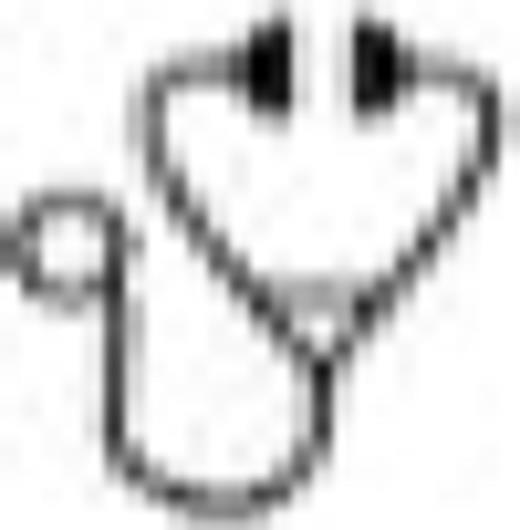Abstract

Background: Leukemic relapse and graft-versus-host disease (GvHD) remain major obstacles after an allogeneic stem cell transplantation (HSCT). Panobinostat is a potent inhibitor of class I, II and IV deacetylases and has shown antileukemic as well as immunomodulatory activity. The hypothesis of our phase I/II PANOBEST trial was that panobinostat can effectively prevent relapse in patients (pts) with high-risk (HR) myeloid diseases while simultaneously reducing GvHD. We aimed to determine dose-limiting toxicity (DLT), maximum tolerated dose (MTD) and/or recommended phase 2 dose (RP2D) of panobinostat in adult pts with HR acute myeloid leukemia (AML) or myelodysplastic syndromes (MDS) in complete hematologic remission (CR) after a reduced-intensity HSCT. Secondary objectives were evaluation of safety and tolerability of panobinostat, and overall (OS) and disease-free survival (DFS) at 1 and 2 years after HSCT.
Methods: In two sequential schedules, panobinostat was administered orally thrice weekly, (TIW), either every week (A) or every other week (B). In schedule A, panobinostat was started at a dose of 10 mg TIW and escalated to 30 mg TIW using a 3+3 design; in schedule B, panobinostat was given at doses of 20-40 mg TIW. Panobinostat was initiated between day +60 and +150 after HSCT and given for up to 1 year. Eligibility criteria included: ANC ≥ 1,000/μL, platelets ≥ 75,000/μL, adequate organ function and no severe GvHD. DLT was defined as prolonged G4 hematologic toxicity or any non-hematologic toxicity ≥ G3 unrelated to disease progression or intercurrent illness within 28 days of the first panobinostat dose.
Results: 42 pts (37 AML, 5 MDS) were enrolled, with a median age of 52 years (range, 21-71). Cytogenetics were classified as low (n=6), intermediate-1/2 (n=20) or adverse risk (n=16) according to ELN criteria. Panobinostat was started a median of 98 days (range, 60-147) after HSCT from a matched related (n=9), matched unrelated (n=24), mismatched unrelated (n=6) or haploidentical donor (n=3). The majority of patients (n=28, 67%) were transplanted with active disease (bone marrow blasts 0-80%, median 21%, 1 pt. with extramedullary AML), 9 in CR1 (21%) and 5 in CR2 (12%). Patient and transplant characteristics were equally distributed between schedules A and B. Of 42 pts, 22 (54%) have completed one year of panobinostat, 1 remains on treatment and 19 (46%) discontinued prematurely after a median of 70 days (range, 12-342) due to adverse events (AEs) (n=10), relapse (n=6), patient decision (n=2) or prohibited comedication (n=1). To date, 24 out of 42 patients experienced panobinostat-related grade 3/4 AEs (schedule A: n=14, 67%; schedule B: n=10, 48%). The most common AEs were hematologic toxicity (G3: 14 pts, 33%; G4: 2 pts, 5%), constitutional (G3: 7 pts, 17%) and gastrointestinal symptoms (G3: 5 pts, 12%). Neurological AE and pain (G3, 2 pts each, 5%) as well as metabolic/laboratory alterations (G3: 3 pts., 7%) and renal toxicity (G3, 1 pt, 5%) were also reported. AEs were fully and rapidly reversible after interrupting panobinostat (n=24); 14 patients needed dose adjustment and no study-related deaths occurred. The RP2D was 20 mg TIW in arm A and 30 mg TIW every other week in arm B based on 5 DLTs: fatigue G3 at 20 mg, colitis and nausea/emesis G3 each at 30 mg (arm A), diarrhea and headache G3 at 40 mg each (arm B). Prophylactic or preemptive donor lymphocyte infusions (median 2, range, 1-6) were administered to 10 pts (42%, median 1.5x106 CD3+ cells/kg) in arm A and 8 pts (33%, median 0.5x106 CD3+ cells/kg) in arm B. Cumulative incidence (CI) of moderate (n=8) or severe (n=2) chronic GvHD was 24±0.4% at one year after HSCT and did not differ between both arms. There was no evidence of impaired immune reconstitution. To date, median OS and DFS have not been reached after a median follow up of 22 months (range, 6-57). At two years after HSCT, 5 patients have died from relapse (n=3), sepsis (n=1) or sudden death (n=1 at 3.5 months after study discontinuation) and CI of relapse was 21±0.5%, resulting in probabilities for 2-year OS and DFS of 88±5% and 74±7%, resp.
Discussion: Panobinostat maintenance following HSCT for high-risk AML or MDS is feasible with a RP2D dose of 20 mg TIW weekly or 30 mg TIW every other week and associated with a low relapse rate. This provides a rationale for a prospective randomized trial of panobinostat as post-transplant intervention.
Bug:NordMedica: Membership on an entity's Board of Directors or advisory committees; Celgene: Honoraria, Other: Travel grants, Research Funding; Novartis Oncology: Honoraria, Other: Travel grants, Research Funding; Boehringer Ingelheim: Membership on an entity's Board of Directors or advisory committees; Astellas: Other: Travel grant; TEVA Oncology: Other: Travel grant; Gilead: Honoraria. Off Label Use: Panobinostat has not been approved for maintenance therapy after an allogeneic stem cell transplantation in ANL and MDS patients . Burchert:Bristol Myers Squibb: Honoraria. Bader:Neovii: Other: Institutional grants; Medac: Other: Institutional grants; Amgen: Consultancy; Novartis: Consultancy; Jazz Pharmaceuticals: Consultancy; Riemser: Other: Institutional grants. Ottmann:Ariad: Consultancy, Honoraria, Membership on an entity's Board of Directors or advisory committees; Bristol Myers Squibb: Honoraria, Membership on an entity's Board of Directors or advisory committees; Novartis: Consultancy, Honoraria, Membership on an entity's Board of Directors or advisory committees, Research Funding; Pfizer: Consultancy, Honoraria, Membership on an entity's Board of Directors or advisory committees; Astra Zeneca: Honoraria, Membership on an entity's Board of Directors or advisory committees.
Author notes
Asterisk with author names denotes non-ASH members.

This icon denotes a clinically relevant abstract

This feature is available to Subscribers Only
Sign In or Create an Account Close Modal